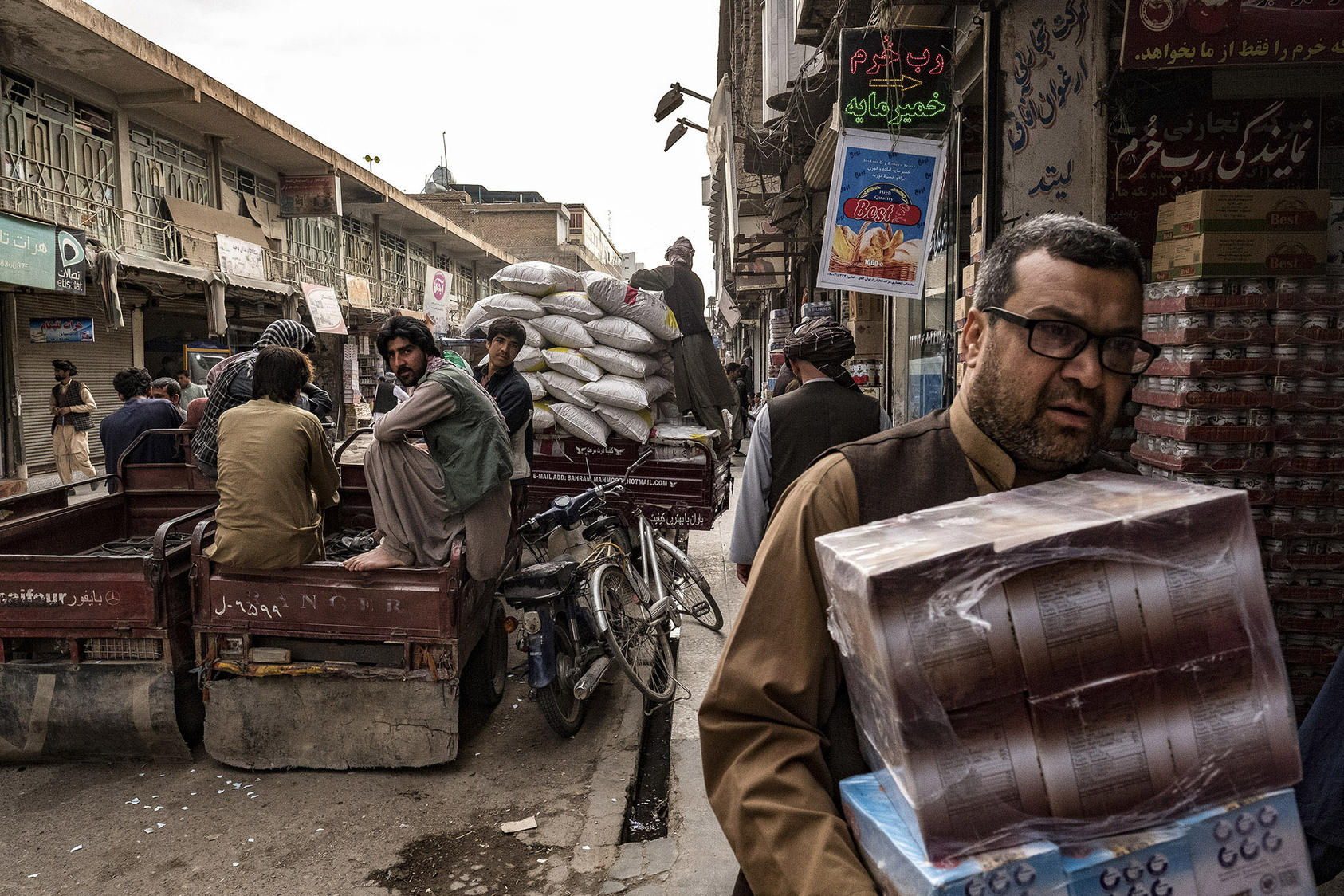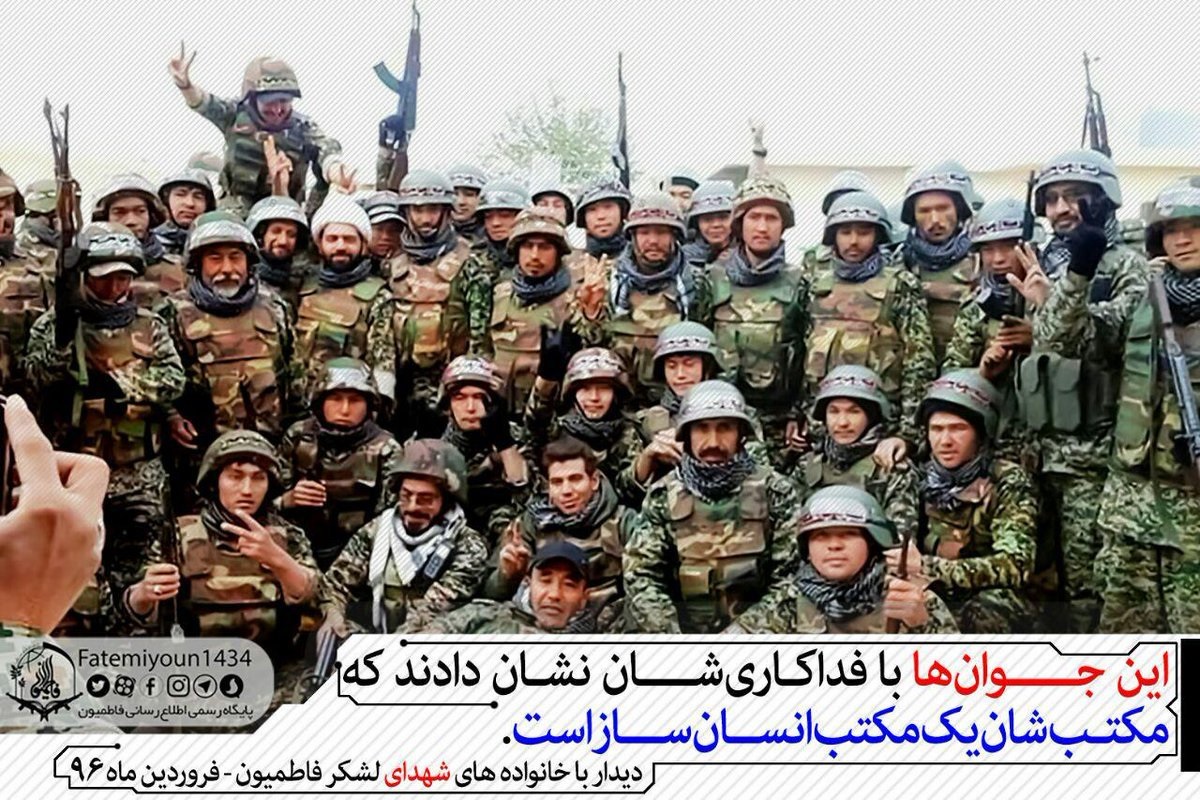By Belquis Ahmadi, Barmak Pazhwak and Michael V. Phelan
Rising tensions between the United States and Iran—illustrated and exacerbated by the January 3 assassination of Iranian General Qassem Soleimani—are rippling out beyond the Middle East. Now, American officials are voicing growing concern about Iranian activities in Afghanistan. In recent weeks, Secretary of State Mike Pompeo said that Iran is supporting militant groups in the country and seeking to undermine the peace process between the U.S. and the Taliban. A top U.S. general for the region, meanwhile, warned that Iranian actions in Afghanistan pose a risk to the approximately 14,000 American troops deployed there.

They are right to be worried. While Iran’s strategy of standing up proxy forces in the Middle East is well understood, the Shiite power also has a long, lesser-known history of engagement in Afghanistan.
Since the Islamic Revolution in 1979, Iran has involved itself with a shifting array of forces operating in its neighbor to the east. It has mobilized Shiite fighters at some junctures, allied with Sunni Taliban insurgents at others, and currently maintains ties with both. Through payoffs, pressure and trade, it has influence over the U.S.-backed government in Kabul. While the rationale for such influence is clear, how it will be used, especially in the wake of the Soleimani killing, is less evident. In this fluid and volatile environment, Tehran has many levers available to achieve its preferred outcome, ranging from sabotage of a peace process aimed at facilitating U.S. withdrawal to orchestrating terrorist attacks on Americans and their interests virtually throughout the country.
But while Iran's capacity to make trouble is worrisome, its overarching strategy most likely pulls in the other direction. Despite a declared passion to avenge the drone strike that killed Soleimani, Iran's primary and patient goal for its neighborhood is to eject American influence as quickly and cheaply as possible. On this objective, Washington and Tehran appear to be in some agreement.
Consequently, the most likely course for Iran and the foreign expeditionary Qods Force that Soleimani led is to quietly build strength inside Afghanistan for the future and, for now, to hold steady in relation to the Taliban, the government and the peace talks.
If, however, the peace process slows or U.S. threats against Iran escalate, Tehran has laid the groundwork to strike U.S. interests across its 500-mile border with Afghanistan and significantly raise the cost of American deployment in the country.
A Web of Ties
Over the past four decades, Iran has provided financial and military support to Afghan mujahedeen factions resisting the Soviet invasion of Afghanistan; deployed Afghans to fight in its war with Iraq in the 1980s; mobilized Shiite Afghan fighters for foreign ventures; and supported Taliban insurgents with funds, training and weapons. Since 2001, it has exerted both positive and negative influence on Afghanistan’s politics, economy, and security, and shaped public narrative in favor of Iran through trade, bribery and political pressures.
Much of this effort was conducted by the Qods Force, an elite unit of the Islamic Revolutionary Guard Corps (IRGC) established in the 1980s early in the Iran-Iraq war and considered a terrorist group by the United States. Its objective was—and remains—to extend Iranian influence throughout surrounding countries. The unit has recruited and provided military training for thousands of young Shia men from Afghanistan, Pakistan, Lebanon, Iraq, Syria, Yemen and the Palestinian territories, mobilizing them as proxies to advance and protect Iranian interests and promote the Islamic Republic.
For example, in Syria, the Qods Force formed the Fatemiyoun brigade to support the regime in the country’s civil war—one of several foreign-fighter militias it established. The majority of Fatemiyoun’s men were “recruited” in Iran from among Afghan refugees and migrants whose economic and legal status made them vulnerable to coercion. (Anecdotal evidence suggests some were also enlisted inside Afghanistan.) In 2018, Hazara and other Shiite comprised the majority of the estimated 50,000 Afghan members of the Fatemiyoun force.
Iran hosts about a million registered Afghan refugees and about 2 million undocumented ones, plus half a million Afghan passport holders with Iranian work permits. About a half million Afghans are estimated to have returned from Iran in 2019.

Qods Force Reach
The same day that the U.S. strike killed Soleimani, Iran’s Supreme Leader, Ayatollah Ali Khamenei, named General Esmail Ghaani the new commander of the Qods Force. Ghaani, who had served as Soleimani’s deputy, is believed to have handled much of the unit’s day-to-day operations and was largely responsible for overseeing regional operations in Afghanistan and elsewhere.
Like his predecessor, Ghaani has significant ties to Afghanistan. Last month, Bamiyan Governor Tahir Zaheer claimed that Ghaani, along with eight other Iranians, visited the province in July 2018. According to Zaheer, Ghaani posed as the “deputy ambassador of Iran to Kabul” using the alias “Ismaili” as a last name. Zaheer claims that Ghaani was in Bamiyan to oversee construction of an Iranian-funded hospital. Bamiyan province in Central Afghanistan is the area of origin for most of the Fatemiyoun Afghan militia’s members. Afghanistan’s Ministry of Foreign Affairs has no record of Ghaani working at the Iranian mission in Kabul and is currently investigating the visit.
Marriage of Convenience
Between 1996-2001, Iran viewed the Taliban regime as a security threat and supported the deposed government of President Burhanuddin Rabbani. Tehran provided the anti-Taliban Northern Alliance with a network of proxies in northern and central Afghanistan, as well as financial and military aid that included weapons and advisers.
Iran’s relationship with the Taliban regime hit a nadir in August 1998, when the Taliban conquered the northern city of Mazar-e-Sharif, raided the Iranian consulate and murdered eight Iranian diplomats and one Iranian reporter. In response, Iran sent troops to the Afghan border amid escalating talk of war. Political and trade concessions by the Taliban eventually eased the tension, and Iranian troops backed off.
At the same time, however, Qods Force officers were dispatched to Afghanistan to train and organize anti-Taliban proxies, overseen by Soleimani and Ghaani.
Following the U.S.-backed ouster of the Taliban, Iran initially played a constructive role by supporting the 2001 Bonn Talks that established the transitional government and provided financial assistance to the new regime. That cooperation soured with President George Bush’s “Axis of Evil” speech in early 2002 and the American invasion of Iraq in 2003, and was replaced by U.S.-Iranian competition for sway over the new elite in Kabul. Iran slipped unaccounted sums of cash to then-President Hamid Karzai, his ministers and other officials as well as parliamentarians to counter American influence.
By 2009, evidence emerged that despite Iran’s decision to eschew any overt or dramatic steps in Afghanistan, it was hedging its options more expansively with military support to Taliban groups in the southwestern part of the country.
Pompeo highlighted those ties on January 7 when he accused Iran of bolstering militant groups in Afghanistan, including the Taliban.
“The Taliban’s entanglement in Iran’s dirty work will only harm the Afghanistan peace process,” he said. Indeed, Tehran was “actively working” to undermine it, he said. About a week later, Afghan police reported the discovery of eight Iranian-made rockets armed and aimed at Kandahar airport. The proxies and networks that Soleimani and Ghaani created over decades could now be exploited by Iran as discrete strategic or tactical weapons.
The Afghan Peace Process
Taliban field commanders, particularly those in southwestern Afghanistan and those who worked with Iran in the past, are more susceptible to pressure to target U.S. bases and interests, should Tehran turn in that direction. Other proxies include the Fatemiyoun brigade and former jihadi commanders. Iranian military doctrine generally favors employing proxies in asymmetric warfare over any conventional confrontation. Using proxies such as breakaway groups of the Taliban or Fatemiyoun militias would avoid the risk of direct conflict with the United States—something the regime has carefully avoided.
For now, these remain hedges against an uncertain future. To be sure, Iran might decide to put some heat on the Americans to hasten their withdrawal from Afghanistan or orchestrate limited strikes to avenge Soleimani; on January 9, the commander of the IRGC Aerospace Force, Amir Ali Hajizadeh, said Iran’s missile attack on an Iraqi base housing American troops was just the start of a revenge operation across the region. Significantly, as Hajizadeh spoke he was flanked by flags of Iranian regional proxies, including the Fatemiyoun.
But the Taliban political office in Doha has been notably cautious regarding the Soleimani affair, its spokesperson drawing a line between the assassination of the Qods Force chief and the fragile peace process that it supports.
The Taliban’s first order of business is getting U.S. troops out of Afghanistan, a strategic objective it shares with Iran and, for that matter—depending on the conditions—with the United States. For Tehran, a voluntary drawdown through a peace deal with the Taliban is almost certainly the fastest and lowest-cost path toward attaining its goal.
Yet American security officials are right to be concerned about the levers for violence and disruption at the disposal of the Qods Force and the Iranian regime. For now, Iran appears content—with the exception of some warning shots—to keep its proverbial powder dry in Afghanistan. Should the peace process bog down, or the U.S. ramp up threats or attacks against Iran or its leaders, the kind of proxy war already endured by Lebanon, Syria, Iraq and Yemen could also embroil South Asia.
This article first appeared on USIP.org.
